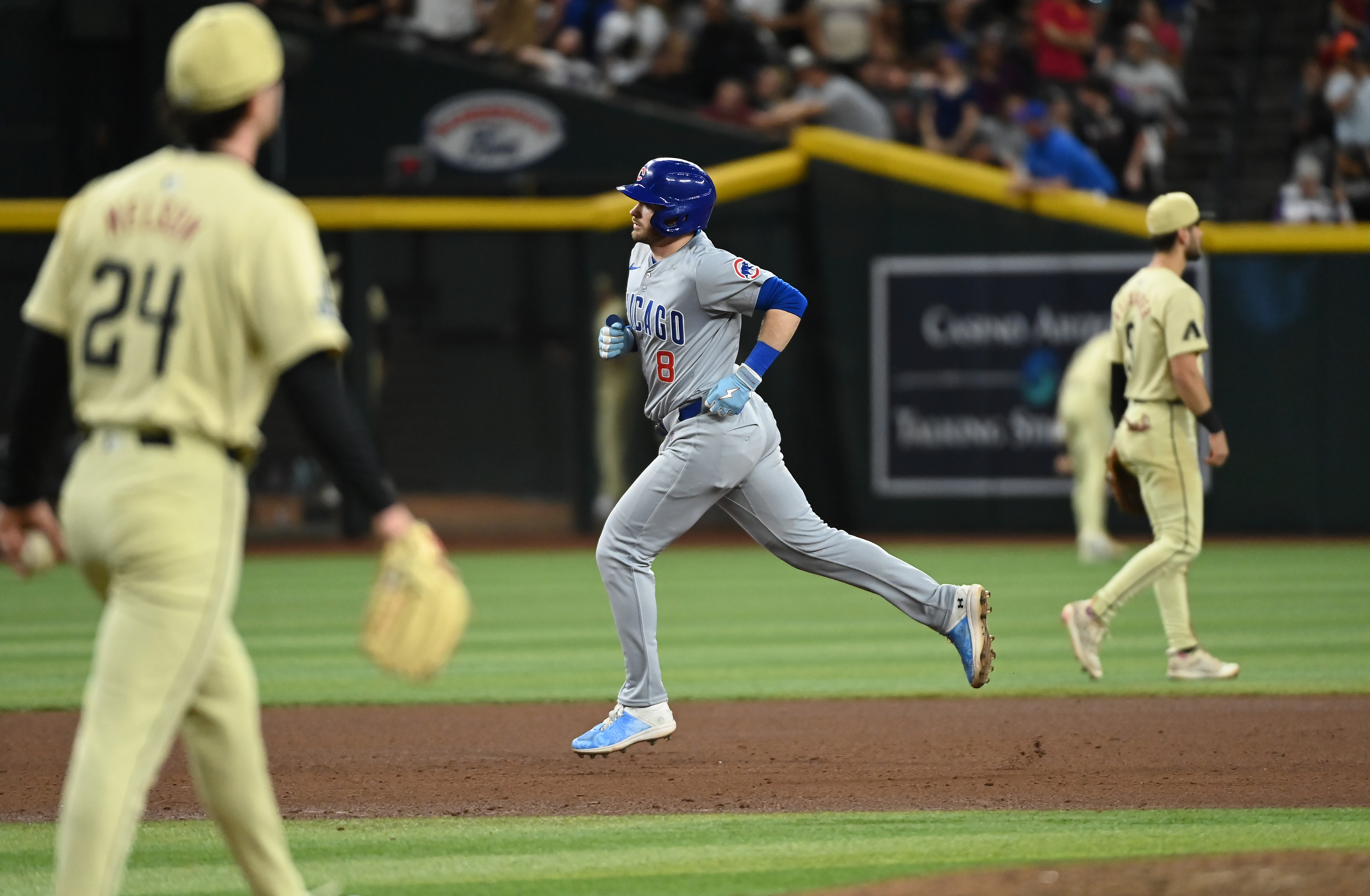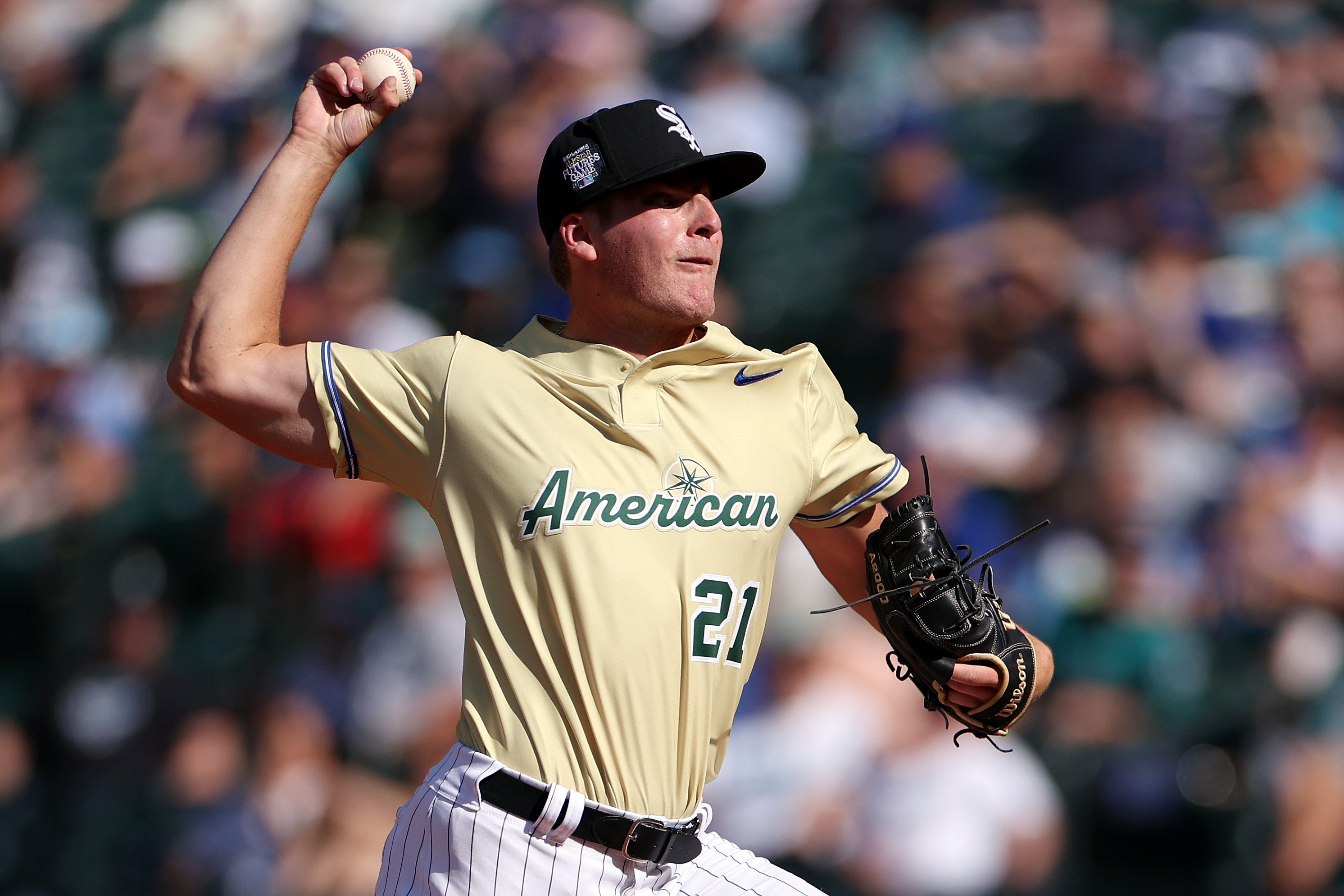“October starts in July” might not have the same ring to it as “October starts in March,” but nobody will be able to mistake the sense of urgency of this baseball season, for the Cubs or anyone else.
For a group of Cubs players who played under that directive the last two seasons, that much of the historically unusual size and shape of the 2020 season might be vaguely familiar.
Everything else associated with a 60-game season that opens during the traditional trade-deadline week — including a summertime spring training starting July 1 — figures to be a work-in-progress, adjust-on-the-fly operation at best and a two-month, high-risk walk through a COVID-19 minefield at least.
MORE: 2020 MLB season is a go with July 23 or 24 start date for 60-game schedule
As Cubs second baseman Jason Kipnis tweeted Tuesday night after the final details were worked out between the owners and union: “There’s going to be a lot of positive tests …when players start reporting next week … Part of the plan? Accounted for? Nail in the coffin? Who knows, so strap in …”
What we know so far is the Cubs open Spring Training 2.0 next week at Wrigley Field with all players and essential personnel undergoing coronavirus testing on the way in and, if the protocols contain outbreaks enough to get through the next three weeks or so, then comes the real challenge of playing 40 games against the four NL Central opponents and 20 against five AL Central opponents.
“I think we’re well positioned,” Cubs president Theo Epstein said recently in anticipation of a July start. “The coaching staff, the support staff and our players have done a really good job of staying ready and staying flexible and staying in communication.”
MLB
Where will it lead?
The Cubs missed the playoffs in 2019 for the first time in five years, but at the 60-game mark were in playoff position. The eventual World Series-champion Nationals, on the other hand, were six games under .500 and well out of the playoff picture 60 games in. And the 2017 Cubs would have missed the playoffs, at 30-30, if that season were this short — instead of playing in the NLCS for a third straight season.
So good luck with your algorithms and PECOTA projections this time around.
As for how some of the other conditions of the delayed, shortened season might specifically impact the Cubs:
Is the four-month delay an advantage or disadvantage for the Cubs? At first glance, it looks negligible, since the Cubs were in the midst of an especially healthy camp when spring training was shut down in March. But indirectly, it could be a steep disadvantage for the Cubs since the Cardinals (Miles Mikolas’ elbow, Jordan Hicks’ elbow, Brett Cecil’s hamstring and Paul Goldschmidt’s elbow) could have at least four guys healthy who were expected to start the regularly scheduled season on the injured list. The upstart Reds also get a pair of regulars — Eugenio Suarez and Nick Senzel — back at full strength from March/April injuries.
What about Cubs reliever Brandon Morrow, the former closer, who looked like a possible late-season secret weapon? Initially, the delay looked like it could help put Morrow in position to rebound from chest and calf injuries to be a late-season/postseason force. But rehab issues combined with the uncertain timeline caused him to shut down and look more at 2021 for a possible return.
Will a short season benefit some of the older pitchers? The decreased wear and tear might benefit the 36-year-old Jon Lester. And closer Craig Kimbrel figured to be a crapshoot after his rough finish in 2019 following a free agency winter that extended to June. But, the bigger question might be …
Will a short season be a curse or a blessing for Yu Darvish and/or Kyle Hendricks? Last season Darvish had a 5.02 ERA and 73-to-41 strikeout-to-walk ratio the first two months of the season — and 2.97, 88-5 in August and September. Meanwhile, Hendricks typically is a relatively slow starter (career ERAs of 4.29 in April, 4.63 in June) but historically a strong finisher (2.78 career after the All-Star break). Is it all about the time of the year? Or the break from the chute? This might be the most intriguing competitive subplot for the Cubs if the league survives the full two-month season (plus October).
What about Kyle Schwarber and the DH? Shhhh. Don’t let Schwarber hear you talking about sticking him in the designated hitter spot every day with DH now a part of the NL for at least this abbreviated season. He wants no part of it — and it might not even be the Cubs’ best option. It might be better utilized to help newcomer Seven Souza Jr. transition — even in a short season — from the devastating knee injury that cost him all of last season. That, and as a means to better rotate a roster of versatile players — including a pair of good-hitting catchers — through the lineup for best matchups.
MORE: Why Kyle Schwarber is not the automatic choice for Cubs DH in 2020
Are the Cubs in any better position to weather potential COVID-19 storms than anyone else? This, of course, is the biggest variable every team is facing. It’s unknown how many, if any, key Cubs players or staff have tested positive. And either way, all it takes is one player to disrespect protocols or otherwise engage in enough high risk behavior to cause a damaging outbreak. As of late June, the Phillies — with the most known cases (seven) among players — in theory could be better positioned than most if those players are able to return to full strength and have immunity throughout the season.
What about underlying risk conditions for players or their families? Will all the Cubs even show up to play? MLB and the union are putting together a list of players who qualify through their own high-risk conditions or those of family members for the option of sitting out the season on a COVID-19 “injured list” and still getting service time and salary. Lester and first baseman Anthony Rizzo are both cancer survivors and would seem to qualify for the list — though both have indicated their intentions to play.
Former Cubs managers Dusty Baker (70) and Joe Maddon (66) are in what is considered a high-risk age range. Other players might choose to opt out without getting paid. This could be an ongoing issue throughout the “season.”
What about the schedule? Come on, the Cubs have a clear path to the playoffs, right? No Dodgers, Angels, Astros, Yankees, Braves, Phillies, Nationals, Red Sox or Rays, so no problem, right? Talk about looking good on paper, with the Royals, Tigers, retooling Indians and young White Sox displacing some of the previously scheduled AL East opponents and NL powers from the east and west. Then, again, even last year, the Pirates got off to a 24-20 start that had them in playoff position at that point, and the Tigers had a winning record four weeks into the season.
If the Cubs play well enough into late August, will they add players at what’s now the Aug. 31 trade deadline? Don’t count on it — certainly not if it means giving up a good young player or taking on salary obligation in this economic climate. Besides, it’s not a two-month stretch drive to get through after the deadline; it’s 27 days.
If the Cubs start poorly, will they dump players like Kimbrel or Jose Quintana — or try to leverage the market with a Kris Bryant trade? They can try. But good luck with that (see “economic climate” in previous answer).
Can the Cubs or anyone else actually pull off three months of baseball without the coronavirus — now raging in Arizona, Texas and Florida — stopping the sport again? That’s the billion-dollar question. Stay tuned.
Click here to download the new MyTeams App by NBC Sports! Receive comprehensive coverage of the Chicago Cubs easily on your device.

